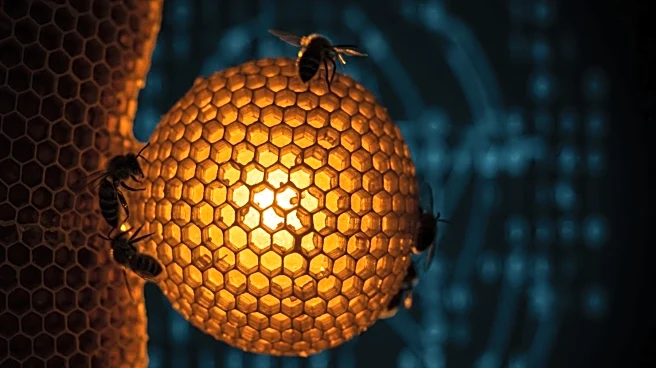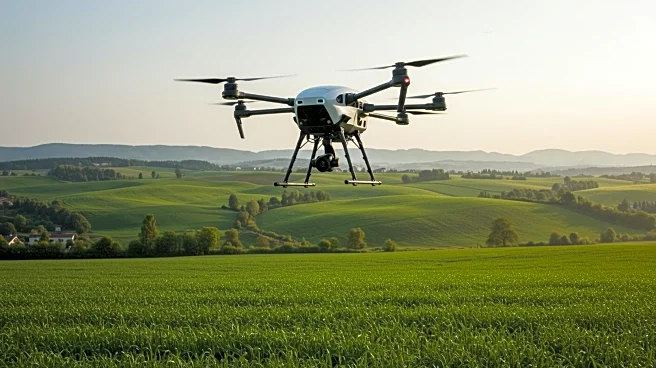What is the story about?
What's Happening?
Researchers at the University of Sheffield have discovered that bees use their flight movements to enhance brain signals, enabling them to recognize complex visual patterns with high accuracy. This study, which involved creating a digital model of a bee's brain, suggests that movement plays a crucial role in gathering information efficiently, rather than relying solely on extensive computing power. The findings indicate that even small insect brains can solve complex tasks, offering valuable insights for developing next-generation AI and robotics.
Why It's Important?
The study's findings have significant implications for AI development, particularly in robotics and self-driving vehicles. By understanding how bees use movement to process visual information, researchers can design AI systems that mimic these efficient processes, potentially reducing the need for large computational resources. This approach could lead to more energy-efficient and cost-effective AI solutions, enhancing the capabilities of robots and other AI-driven technologies in real-world applications.
Beyond the Headlines
The research highlights the interconnectedness of perception, action, and brain dynamics, suggesting that intelligence arises from the interaction between these elements. This perspective challenges traditional views on brain size and intelligence, emphasizing the importance of neural computations in task performance. The study also underscores the potential for biomimicry in AI development, where natural processes inspire technological advancements, paving the way for innovative solutions in various fields.
AI Generated Content
Do you find this article useful?











